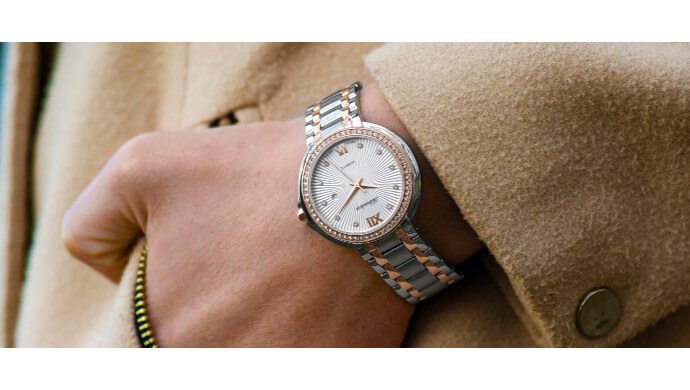The food delivery startup has a tracking feature in place, which provides real-time updates on the location of their designated delivery men and women

Photo Source: Unsplash
Imagine having piping hot gourmet food delivered right to your doorstep. Who can resist that?
The deepening economic turmoil left behind by the highly concerning Brexit leaves London-based Deliveroo unfazed as it continues to see a roaring business in both Asia and Europe. Becoming profitable as fast as Uber, the limitless potential investors see in Deliveroo is evident from the colossal amount exceeding $200 million it has raised since 2012.
While Uber has now burst onto the food delivery scene with UberEats vying for a share of the pie, if Brexit doesn’t prove to be of much concern, let alone this will. Before long, their signature kangaroo with a takeaway bag logo will become synonymous with food delivery across Asia and Europe, for 5 reasons you are just about to find out.
Undiverted attention to what matters most
The mantra of Deliveroo lies in delivering food to customers in the fastest and most efficient way possible. Bearing this in mind, logistics undoubtedly constitutes the core of their business, calling for a seamless delivery flow. At Deliveroo, there is a team of data scientists assiduously working on its in-house logistics system to perfect the algorithm in picking the right Roomen (what Deliveroo calls their delivery men) to send out an order.
Getting on the ground
William Shu, the founder of Deliveroo initially had no experience in logistics; but came close to having first-hand experience as a Roomen in the initial 10 months of the food delivery startup. Without hesitation, the former investment-banking analyst put on a helmet and weaved through busy traffic in London wanting to have an authentic experience of delivering food to his customers.
That untiring thirst for understanding how logistics works reflects how dedicated Shu is, explaining why Deliveroo was able to scale up so quickly. Even when he bumped into his ex-manager at a hedge fund whose jaws dropped at seeing Shu, that did not stop him. He went on to deliver food every single day for 10 months, showing that he really means business with Deliveroo.
Also Read: These three players dominate China’s consolidated food delivery market

Photo Source: Unsplash
Every second counts
How precise can the tracking of delivery get, with the possibility of delays due to unforeseen circumstances? Deliveroo understands every second counts in ensuring that food is delivered piping hot to you. To that end, the on-demand food delivery startup has a tracking feature in place, which provides real-time updates on the location of their designated Roomen or Roowomen.
In a bid to maximise efficiency in the delivery process, the data scientists study specific parts of it and ceaselessly iterate the system. Unsatisfied with merely knowing that the Roomen will arrive in 10 minutes, Shu wants to know precisely the food preparation time and exactly his arrival in order to optimise the pairing of driver and restaurant. This will ensure food being delivered to the customer’s doorsteps is as good as those freshly made in the kitchen.
Also Read: Can the world’s most famous taxi app UberEATS the competition?

Photo Source: Unsplash
Going hyper-local
Bringing food straight to the doorsteps isn’t new but delivering fancy cuisine from posh restaurants sure is. More often than not, upscale eateries do not offer delivery service, but that is about to change with Deliveroo. Its app users can now enjoy in the comfort of their own homes, haute cuisine available only when you dine in. In this aspect, Deliveroo enjoys an edge over its counterparts in the food delivery scene.
While detractors would argue that this hyper-local market is too niched to make a killing from, present-day statistics tell otherwise. The number of new Internet users stands at a whopping 1.25 million or even more in Asia alone. Moreover, smartphones are drawing tech users away from personal computers as majority of them web-surf only on their mobile phones.
Against this backdrop of elevating mobile penetration rates, consumers’ appetite for on-demand food delivery is increasingly whetted. Pair an advantage Deliveroo has over its rivals and the bottomless potential in this on-demand market, Deliveroo just found themselves a massive and booming market in Asia. There is simply no better time than now to expand into Asia. Deliveroo is certainly on the nose about that as they have expanded into Singapore and Hong Kong, with more cities in Asia to come.
Also Read: 5 reasons why HappyFresh stands out among other grocery delivery startups
Go all out or go home
Nothing beats an “all-in” attitude as more competitors crowd the food delivery scene and vye for a share of the pie. It has been on the heels of its rival Foodpanda that has dominated the food delivery scene in Singapore since 2012. UberEats, the newest kid on the block, also did little to stand in the way as Deliveroo came on tops being the fastest in service.
The GrabCar and Flash rides can now count towards Deliveroo credits, useful for offsetting food orders, albeit for a limited period.
We may not know for sure how things will pan out in this dynamic on-demand market, but it is clear a winner is in the making.
—
Carrie Er is a Marketing Communications Specialist at Arcadier, a SaaS company that powers next generation marketplace ideas. You can follow Arcadier on Twitter, Facebook, and LinkedIn for the latest insights on the Sharing Economy.
The views expressed here are of the author’s, and e27 may not necessarily subscribe to them. e27 invites members from Asia’s tech industry and startup community to share their honest opinions and expert knowledge with our readers. If you are interested in sharing your point of view, submit your post here .
The post Deliveroo sets its sight to rule the food delivery scene in Asia appeared first on e27.